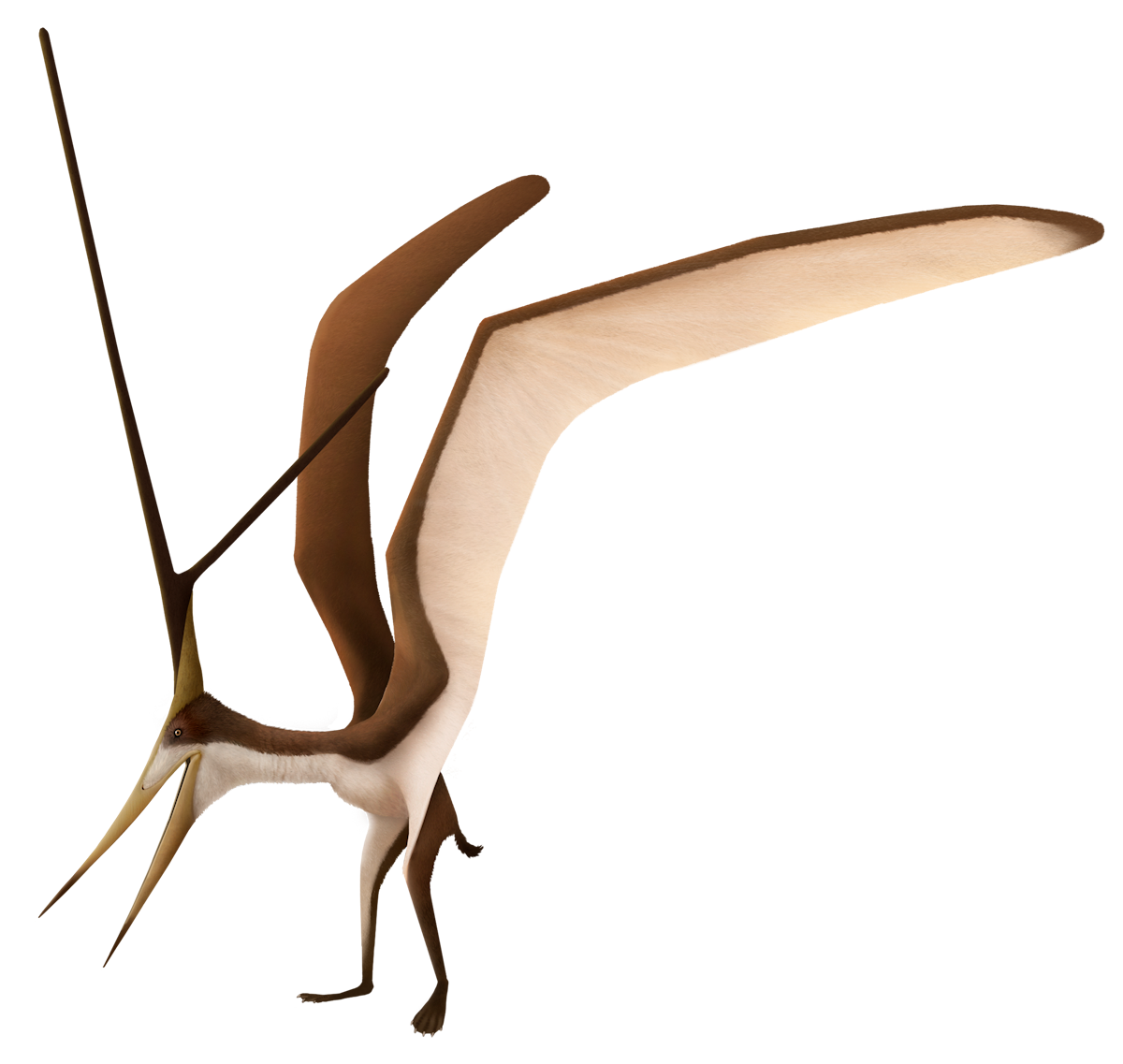Nyctosaurus



The founding member of the small pterosaur family Nyctosauridae, Nyctosaurus is often seen as a contemporary of the more famous and somewhat similar genus Pteranodon.
They are also related, being members of the much larger group Ornithocheiroidea. They are both present in the Niobrara Formation of Kansas, with Nyctosaurus living through a small part of the late Santonian Stage of the Late Cretaceous, about 85 million years ago. It was short-lived unlike its relative.
At this time, North America was cut into two large islands, Laramidia in the west and Appalachia in the east. The middle of the continent was covered by the Niobrara Sea, a massive shallow seaway that stretched from the ancient Arctic Ocean to the Gulf of Mexico in the south.
The Niobrara Formation of Kansas is a large chalk formation that preserves a massive array of marine life.
Among the largest animals here were the mosasaurs up to 15 meters long, while the largest plesiosaurs also equalled them in size. Sharks, bony fish, shelled mollusks called ammonites and marine birds are the other animals found here.
There are around four genera preserved here, and they were all soaring piscivores with no teeth. Nyctosaurus itself was the smallest pterosaur in the formation. It had a wingspan of just 2 meters and its wings were long and narrow with a slightly curved edge.
We also know that Nyctosaurus had a gigantic crest, far larger than its entire body. It was a thin, bony antler-like structure up to 55 centimeters tall with a backward-pointing spar in the middle. The crest has been reconstructed with a massive skin frill at times but this has been deemed implausible in recent times.
Also the fourth winger, the wing finger, was the only prominent one in its hands. Nyctosaurus’ three others had actually atrophied over time to the point that they were hardly visible anymore.
All pterosaurs used their other fingers for walking on, but it is unclear what Nyctosaurus was doing, other than spending almost its entire life soaring over the waves.
These pterosaurs all used the technique called dynamic soaring. The same technique is used by many other seabirds today, especially albatrosses. Essentially it makes use of the gradients of air just above the water's surface. This is an easy method if one wants to travel for great distances at not expend too much energy.
They could travel at incredible speeds via this technique. The type and only species in the genus is Nyctosaurus gracilis, based on a holotype found by Othniel Charles Marsh in 1876. At the time it was identified as a species of Pteranodon, P. gracilis. He reclassified the genus himself.
We also know that Nyctosaurus had a gigantic crest, far larger than its entire body. It was a thin, bony antler-like structure up to 55 centimeters tall with a backward-pointing spar in the middle.
It is known from studies that this genus grew rapidly, reaching near-adult sizes in less than a year. This is typical of almost all pterodacytyloid pterosaurs for which the ontogeny is known.
1.9 m (6.2 ft)



